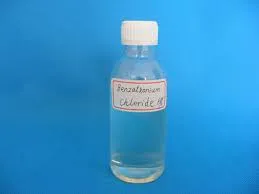hydrolyzed polyacrylamide
Hydrolyzed Polyacrylamide An Overview
Hydrolyzed polyacrylamide (HPAM) is a water-soluble polymer that has gained significant attention in various industries due to its unique properties and versatile applications. Derived from the polymerization of acrylamide, HPAM is created through the hydrolysis of polyacrylamide, resulting in a product that exhibits enhanced functionality in a range of environments. This article will explore the characteristics, applications, and benefits of hydrolyzed polyacrylamide.
Characteristics of Hydrolyzed Polyacrylamide
HPAM is characterized by its high molecular weight and ability to dissolve in water, forming a viscous solution. The degree of hydrolysis, which refers to the extent to which the acrylamide units are transformed into carboxyl groups, significantly influences its properties. A higher degree of hydrolysis generally leads to increased solubility and reactivity, enabling HPAM to interact more effectively with various substances.
The primary feature of HPAM is its gel-forming ability, allowing it to increase viscosity and modify the flow behavior of water in different applications. Moreover, HPAM is known for its shear-thinning properties, which means that its viscosity decreases under stress, making it easier to pump through pipelines and equipment. This behavior is particularly advantageous in applications where ease of handling and transport is required.
Applications of Hydrolyzed Polyacrylamide
HPAM has a broad spectrum of applications across several industries, including oil and gas, agriculture, mining, and wastewater treatment.
1. Oil and Gas Industry In this sector, HPAM is utilized primarily in enhanced oil recovery (EOR) processes. It is injected into wells to increase the viscosity of water, thereby improving the displacement of oil from reservoirs. This not only increases the extraction efficiency but also helps in reducing the amount of water needed for oil recovery.
2. Agriculture Hydrolyzed polyacrylamide plays a crucial role in soil conditioning and water retention. It is used to improve soil structure, reduce erosion, and enhance the retention of moisture in sandy or loose soils. The application of HPAM in agriculture leads to better crop yields and more efficient use of water resources.
hydrolyzed polyacrylamide

3. Mining In the mining industry, HPAM is employed in the process of flocculation, which helps in the separation of minerals from ore. By increasing the viscosity of the slurry, HPAM aids in settling solid particles and clarifying the liquid phase, thus improving the efficiency of various extraction processes.
4. Wastewater Treatment HPAM is also used in wastewater treatment facilities to aid in flocculation and sedimentation processes. It enhances the removal of suspended solids and organic matter, leading to cleaner effluent and more effective treatment outcomes.
Benefits of Hydrolyzed Polyacrylamide
The use of hydrolyzed polyacrylamide offers several benefits across its diverse applications. Firstly, its ability to form viscous solutions enhances process efficiency, reducing the energy and resources needed for tasks such as pumping and mixing. This can result in significant cost savings for businesses.
Secondly, HPAM is environmentally friendly compared to some synthetic additives, making it an attractive option for industries looking to reduce their ecological footprint. It is biodegradable under certain conditions, which contributes to sustaining environmental health.
Lastly, HPAM's versatility and adaptability to varying conditions make it a preferred choice for professionals in the oil and gas, agricultural, mining, and wastewater treatment sectors. Its unique properties allow for tailored solutions that meet specific industry needs, boosting overall productivity and effectiveness.
Conclusion
Hydrolyzed polyacrylamide has emerged as a crucial polymer with wide-ranging applications in multiple industries. Its unique characteristics, including viscosity enhancement and eco-friendliness, position it as a valuable tool essential for modern practices in oil recovery, agriculture, mining, and wastewater treatment. As industries continue to seek innovative solutions that are both effective and sustainable, HPAM is likely to play an increasingly prominent role in developing more efficient processes and products.
-
Water Treatment with Flocculant Water TreatmentNewsJun.12,2025
-
Polymaleic AnhydrideNewsJun.12,2025
-
Polyaspartic AcidNewsJun.12,2025
-
Enhance Industrial Processes with IsothiazolinonesNewsJun.12,2025
-
Enhance Industrial Processes with PBTCA SolutionsNewsJun.12,2025
-
Dodecyldimethylbenzylammonium Chloride SolutionsNewsJun.12,2025





